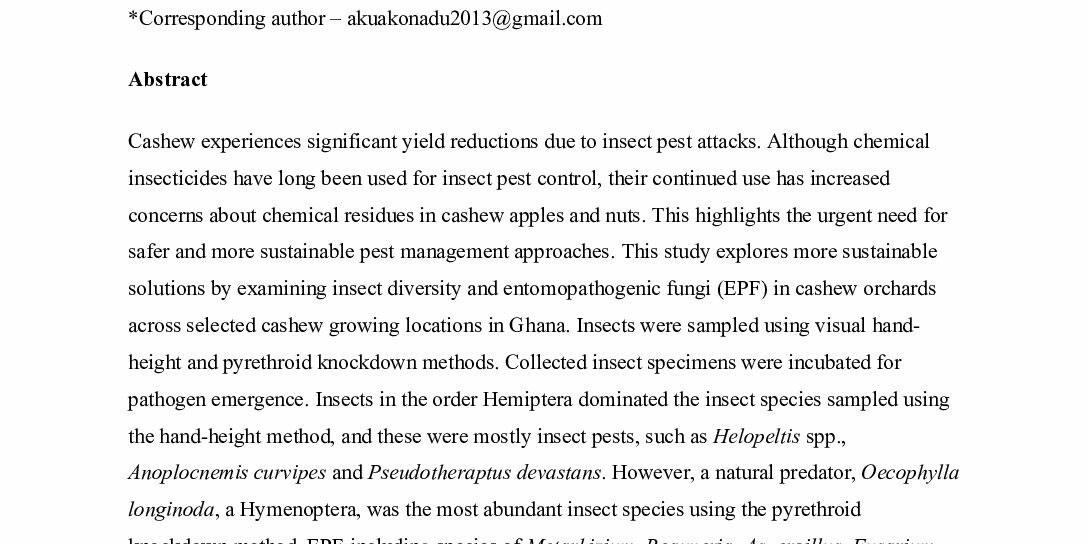Cashew experiences significant yield reductions due to insect pest attacks. Although chemical insecticides have long been used for insect pest control, their continued use has increased concerns about chemical residues in cashew apples and nuts. This highlights the urgent need for safer and more sustainable pest management approaches. This study explores more sustainable solutions by examining insect diversity and entomopathogenic fungi (EPF) in cashew orchards across selected cashew growing locations in Ghana. Insects were sampled using visual hand-height and pyrethroid knockdown methods. Collected insect specimens were incubated for pathogen emergence. Insects in the order Hemiptera dominated the insect species sampled using the hand-height method, and these were mostly insect pests, such as Helopeltis spp., Anoplocnemis curvipes and Pseudotheraptus devastans. However, a natural predator, Oecophylla longinoda, a Hymenoptera, was the most abundant insect species using the pyrethroid knockdown method. EPF including species of Metarhizium, Beauveria, Aspergillus, Fusarium, and Paecilomyces were isolated, with some strains demonstrating high virulence under laboratory conditions. Notably, CRIG EPF3 achieved complete mortality of P. devastans and Helopeltis spp. within five days, while the other isolates achieved similar results within 15 days. These findings highlight the potential of native natural enemies including EPF isolates, as eco-friendly biocontrol agents for integration into Integrated Pest Management (IPM) programs.

File Type:
pdf
File Size:
365 Ko
Categories:
Scientific publications

